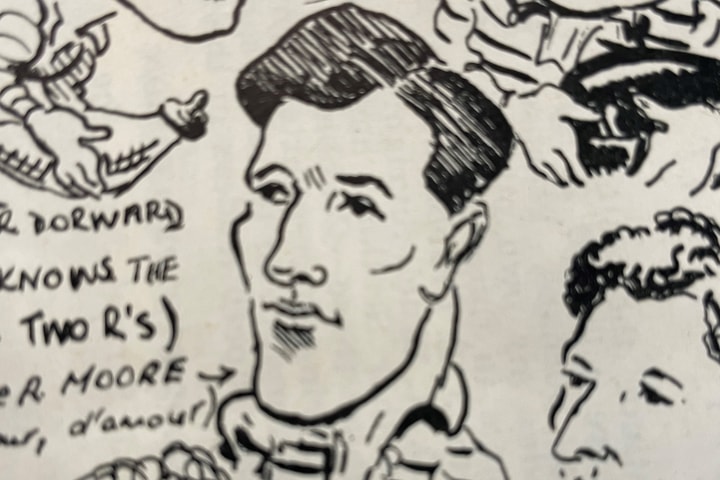John Henry Clayton only played one international match of rugby in his life, but it was a match to be remembered. On March 27th 1871, Clayton, along with nineteen other Englishmen, would take on a Scottish Twenty at Raeburn Place for the first ever international rugby match. Played in front of 4,000 spectators, this game would be the start of a rugby rivalry that continues to this day.

From The Vaults
England Jersey 1871
Out of the forty jerseys worn during this match between the England and Scotland teams, Clayton's is the only known example to have survived - and it is on display in the World Rugby Museum. Prior to the match, it was decided that the England jerseys were to be white, in keeping with Rugby School tradition, with an individual red rose sewn onto the chest. Despite fading to white with time, the rose on Clayton's jersey (pictured) was also originally red.

Clayton became familiar with rugby football upon commencing his education at Rugby School in 1861 at the age of 15. Ten years later he would be one of eleven ex-Rugby School pupils in the first English international rugby side. He would also be one of thirteen England players in that first international game that would never represent their country again. So who was John Henry Clayton and how did he come to wear the Red Rose synonymous with England Rugby? Another object in the Museum's collection helps to shed light on this.
An unattributed article in a scrapbook compiled by C. J. B. Marriott, the RFU Secretary between 1907 and 1927, details Clayton's journey from Rugby schoolboy to international player. Here we learn of Clayton's rugby prowess at Rugby School:
''His first appearance in the football world came about as follows. He was playing in what was called a 'little side'' match of the small boys, wearing, as was the custom then, linen duck trousers and a thin cotton jersey. The School Twenty - for in those days the game consisted of twenty a-side - who were playing in the final match for 'Cock House', had one of their team injured, and as no good man could be found for a substitute, the captain came to the little boys and asked whether anyone would care to help them. Young Clayton volunteered, and was fortunate enough during the game to get hold of the ball and score between the posts, and secured victory for his side. Next year he was in the School House Twenty, and later got his cap, and played in the Old Rugbeian match. At this time he was still far from big, and an old Rug. of prodigious size, called Stodger Brown, shouted to him, 'Come to my arms, my infant,'' and nearly squeezed the life out of him.'
After school, Clayton would join Liverpool F.C., who competed with the nearby clubs with unwavering success. By 1871 he was far from the slight schoolboy who learnt football at Rugby School and his ability on the pitch caught the eye of selectors for the first England international side. The scrapbook excerpt gives us an insight into his training schedule or this match:
''By this time, he had grown into a very big, strong fellow of 17 or 18 stone. He says he trained hard for a month before the match - ran four miles or so with a large Newfoundland dog to match the pace, every morning in the dark before breakfast, which he took at 7.15 a.m., got back for a tub and his meal, and then rode on horseback to Liverpool, four miles away. There he was at the office from 8.30 a.m. till 8.0 in the evening, when he rode home again. He trained, as was then the custom, on underdone beef and beer, and lived a frugal and strenuous life otherwise, with the result that, in addition to putting on weight, he achieved a superb state of fitness for the match.''

England Team 1871
Scotland triumphed in that first encounter but years later Clayton attributed the defeat to a lack of playing time as the majority of the England side had only met each other for the first time in the Raeburn Place dressing-room. Clayton (pictured on top row, third from right) was chosen to play for England again in 1872, but was unable to take part. Whilst his was a short international rugby career, it is immortalised by his jersey- the oldest international football jersey, of any code, anywhere in the world.
This article was first published 19 February 2018.




